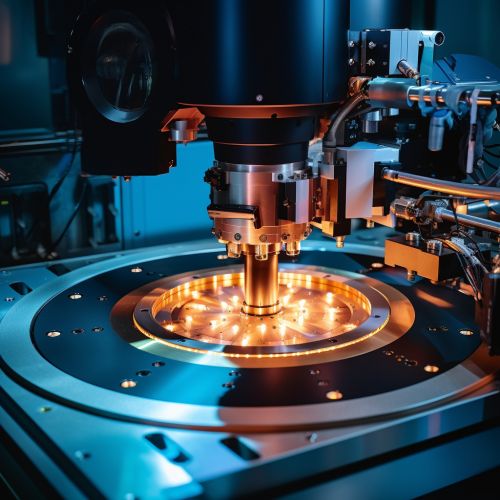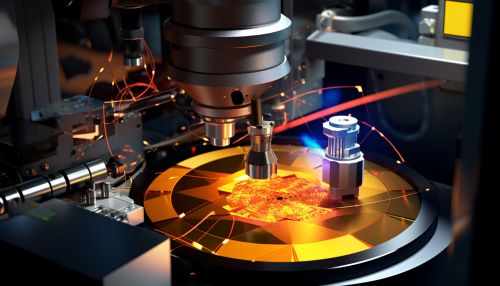Scanning Tunneling Microscopy in Nanotechnology
Introduction
Scanning Tunneling Microscopy (STM) is a powerful technique in the field of Nanotechnology. It allows for the imaging and manipulation of surfaces at the atomic level. This article delves into the principles, applications, and advancements of STM in nanotechnology.


Principles of Scanning Tunneling Microscopy
STM is based on the quantum mechanical phenomenon known as Quantum Tunneling. When a conductive tip is brought close to the surface of a sample, a bias voltage applied between the two can allow electrons to tunnel through the vacuum between them. This tunneling current is highly dependent on the distance between the tip and the sample, allowing for the creation of images at the atomic scale.
The STM operates in two modes: constant height and constant current. In the constant height mode, the height of the tip above the sample is kept constant and the tunneling current is measured. In the constant current mode, the tunneling current is kept constant by adjusting the height of the tip above the sample.
Applications in Nanotechnology
STM has found widespread applications in nanotechnology. It is used in the imaging of atomic and molecular structures, manipulation of individual atoms and molecules, and the study of electronic properties at the nanoscale.
Imaging of Atomic and Molecular Structures
STM allows for the direct imaging of atomic and molecular structures on surfaces. This has been crucial in the study of surface science and the development of nanoscale devices. For example, STM has been used to image the arrangement of atoms in Graphene and the structure of single molecules.
Manipulation of Individual Atoms and Molecules
One of the remarkable capabilities of STM is the ability to manipulate individual atoms and molecules on a surface. This has been used to create atomic-scale structures and devices. The famous "IBM" logo created by moving individual xenon atoms on a nickel surface is a classic example of this.
Study of Electronic Properties at the Nanoscale
STM is also used to study the electronic properties of materials at the nanoscale. This includes the measurement of local density of electronic states and the study of quantum effects such as Quantum Coherence and Superconductivity.
Advancements in Scanning Tunneling Microscopy
Over the years, several advancements have been made in STM technology. These include the development of low-temperature and high-vacuum STMs, spin-polarized STMs, and the combination of STM with other techniques such as Atomic Force Microscopy (AFM).
Low-Temperature and High-Vacuum STMs
Low-temperature and high-vacuum STMs allow for the study of systems in conditions that minimize thermal vibrations and contamination. This has enabled the study of phenomena such as superconductivity and magnetism at the atomic scale.
Spin-Polarized STMs
Spin-polarized STMs allow for the study of the spin-dependent properties of materials. This is crucial in the field of Spintronics, which aims to use the spin of electrons for information processing.
Combination with Other Techniques
The combination of STM with other techniques such as AFM has allowed for the simultaneous measurement of topographic and other physical properties. This has expanded the range of systems that can be studied with STM.
Conclusion
STM has been a revolutionary tool in the field of nanotechnology, providing unprecedented insights into the atomic and molecular world. Its applications in imaging, manipulation, and electronic property measurement have been instrumental in advancing our understanding of nanoscale phenomena. As advancements continue to be made in STM technology, its impact on nanotechnology is set to increase even further.
